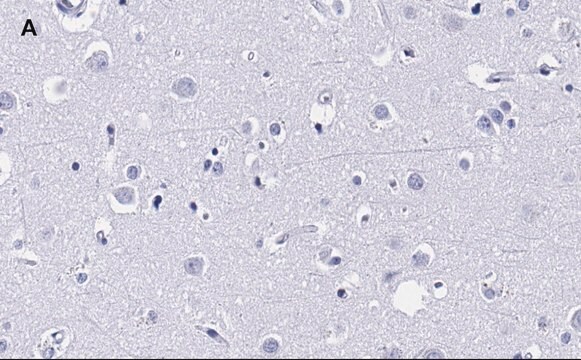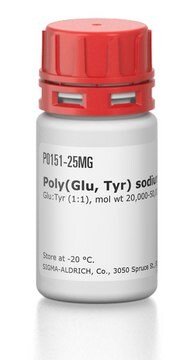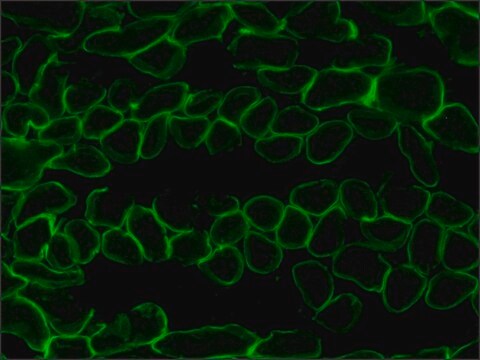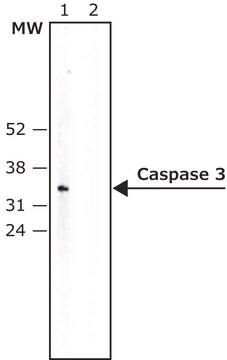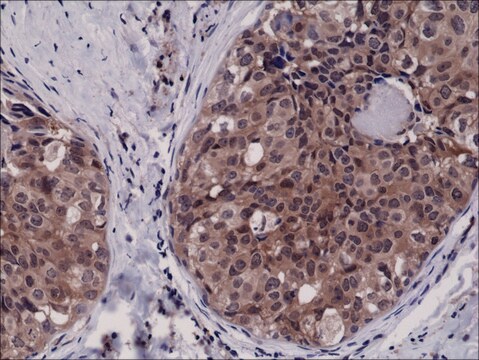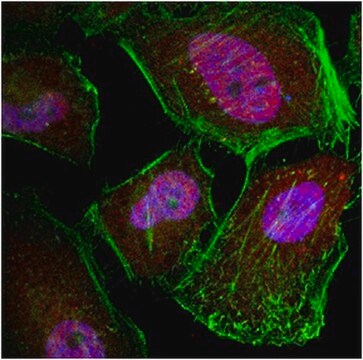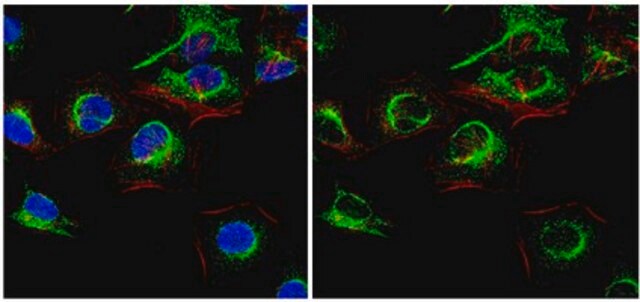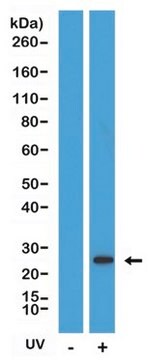MAB4603
Przeciwciało anty-Kaspaza 3, duża podjednostka i proforma, klon 3CSP03
clone 3CSP03, Chemicon®, from mouse
Synonim(y):
CPP32
About This Item
Polecane produkty
pochodzenie biologiczne
mouse
Poziom jakości
forma przeciwciała
purified immunoglobulin
rodzaj przeciwciała
primary antibodies
klon
3CSP03, monoclonal
reaktywność gatunkowa
human
producent / nazwa handlowa
Chemicon®
metody
immunohistochemistry: suitable (paraffin)
immunoprecipitation (IP): suitable
western blot: suitable
izotyp
IgG2a
numer dostępu NCBI
numer dostępu UniProt
Warunki transportu
wet ice
docelowa modyfikacja potranslacyjna
unmodified
informacje o genach
human ... CASP3(836)
Specyficzność
Immunogen
Zastosowanie
Immunoprecypitacja: 2 μg/mg lizatu białkowego Immunohistochemia (mrożona i parafinowa): 2-4 μg/ml przez 30 minut w RT. Barwienie tkanek utrwalonych w formalinie wymaga gotowania skrawków tkanek w 10 mM buforze cytrynianowym, pH 6,0, przez 10-20 minut, a następnie chłodzenia przez 20 minut w temperaturze RT.
Optymalne rozcieńczenia robocze muszą być określone przez użytkownika końcowego.
Apoptosis & Cancer
Metabolism
Caspases
Enzymes & Biochemistry
Powiązanie
Postać fizyczna
Przechowywanie i stabilność
Inne uwagi
Informacje prawne
Oświadczenie o zrzeczeniu się odpowiedzialności
Nie możesz znaleźć właściwego produktu?
Wypróbuj nasz Narzędzie selektora produktów.
polecane
Kod klasy składowania
12 - Non Combustible Liquids
Klasa zagrożenia wodnego (WGK)
WGK 2
Temperatura zapłonu (°F)
Not applicable
Temperatura zapłonu (°C)
Not applicable
Certyfikaty analizy (CoA)
Poszukaj Certyfikaty analizy (CoA), wpisując numer partii/serii produktów. Numery serii i partii można znaleźć na etykiecie produktu po słowach „seria” lub „partia”.
Masz już ten produkt?
Dokumenty związane z niedawno zakupionymi produktami zostały zamieszczone w Bibliotece dokumentów.
Nasz zespół naukowców ma doświadczenie we wszystkich obszarach badań, w tym w naukach przyrodniczych, materiałoznawstwie, syntezie chemicznej, chromatografii, analityce i wielu innych dziedzinach.
Skontaktuj się z zespołem ds. pomocy technicznej